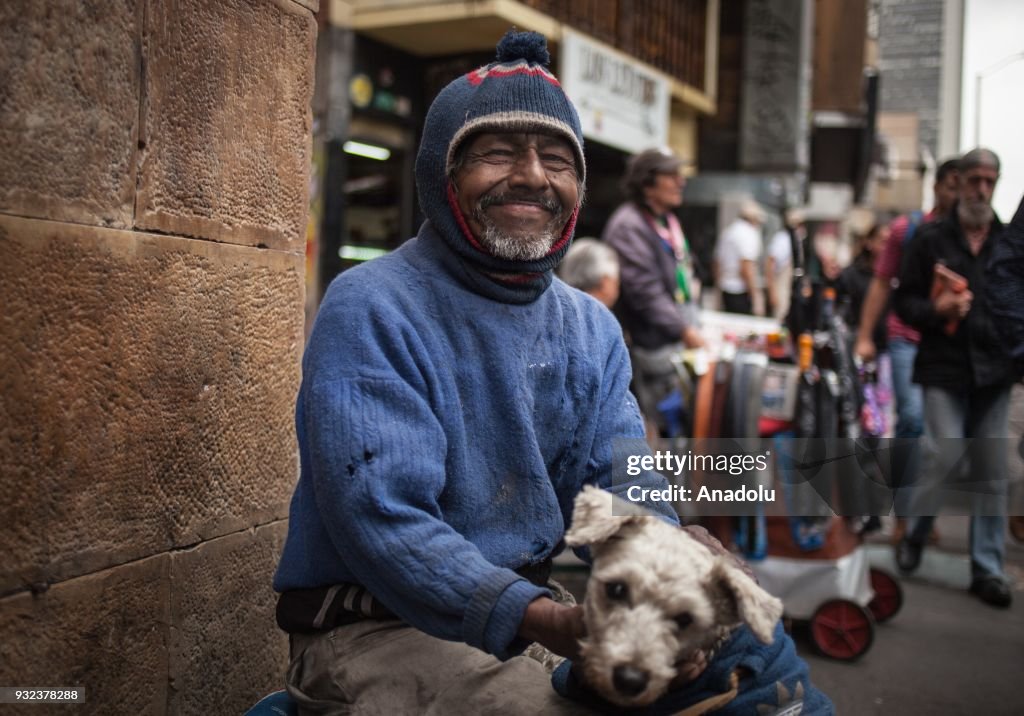"People Without Roof"
BOGOTA, COLOMBIA - MARCH 10 : Manuel, a 55-year-old homeless day laborer, gestures with his dog Mueca in Bogota, Colombia on March 10, 2018. Manuel sleeps on a sidewalk. Manuel said he has been an alcoholic for more than a decade. People without roof involves regular heartbreaking scenes of homelessness from addiction to displacement. There are many factors that push people to live on the streets, most of these people living on the streets of the Colombian capital live in the sewers and under the bridges. Drug addiction and alcoholism get most people to end up in the streets. It is a vicious cycle, and getting out of it often requires a tremendous amount of will-power or help from outside. This help can come from ambulatory and local hospital-based detox programs. Other organizations offer internships, overnight shelters, back-to-work schemes and psychosocial support. This is a holistic approach that sets out to tackle drug addiction as a health and social issue. But with so many street people, of whom an estimated 93% are drug-addicts, these limited resources don't go far. There is a law to protect their rights which also prevents the state from forcing them into treatment programs. In fact the police are also officially prevented from obstructing or moving any street person from their chosen site. This regulation has infuriated shops and business owners in areas where street people congregate. (Photo by Juancho Torres/Anadolu Agency/Getty Images)

PURCHASE A LICENCE
How can I use this image?
$650.00
NZD
DETAILS
Restrictions:
Contact your local office for all commercial or promotional uses.
Credit:
Editorial #:
932378288
Collection:
Anadolu
Date created:
15 March, 2018
Upload date:
Licence type:
Release info:
Not released. More information
Source:
Anadolu
Object name:
AA_15032018_708956.jpg
Max file size:
4816 x 3369 px (40.78 x 28.52 cm) - 300 dpi - 5 MB